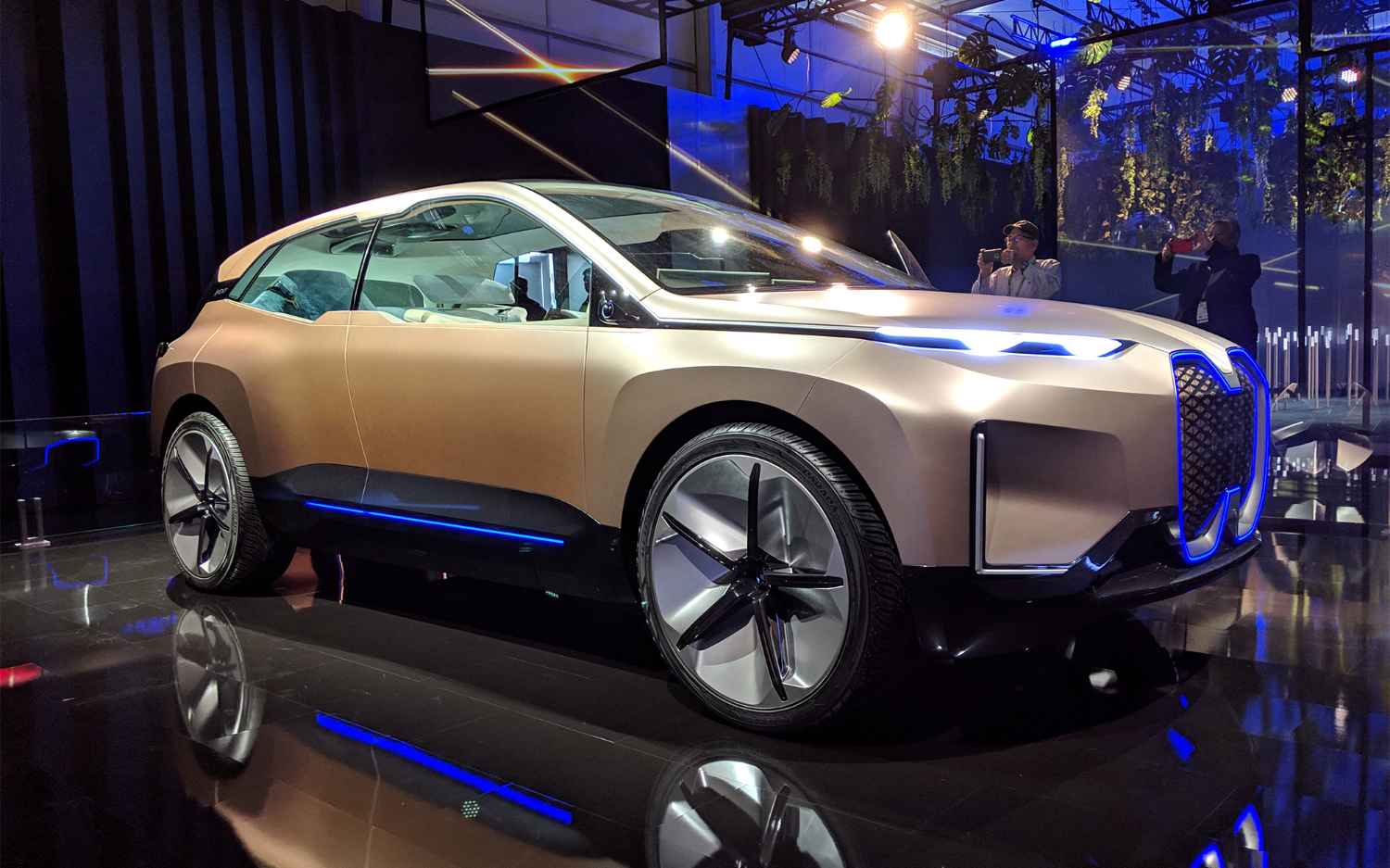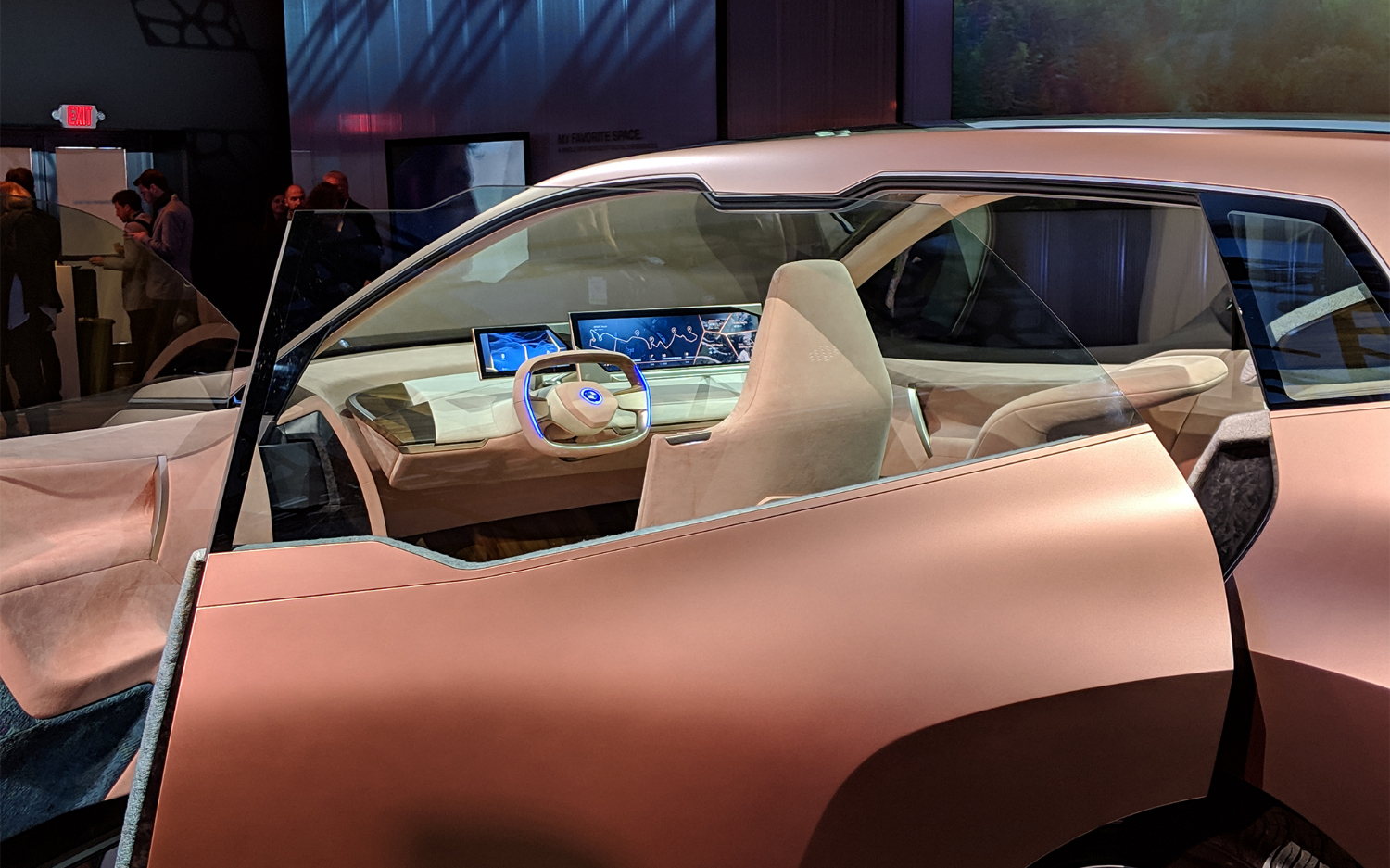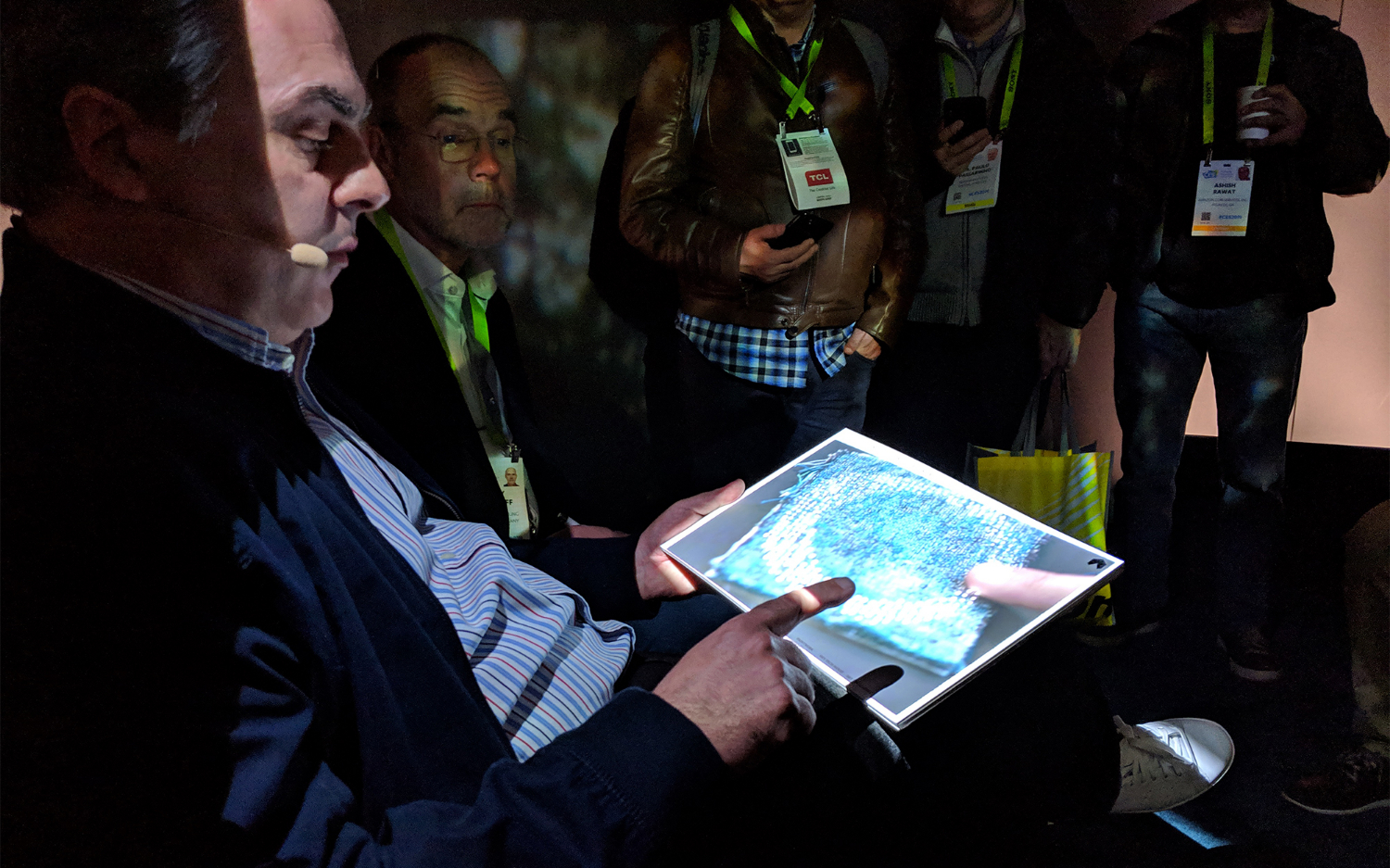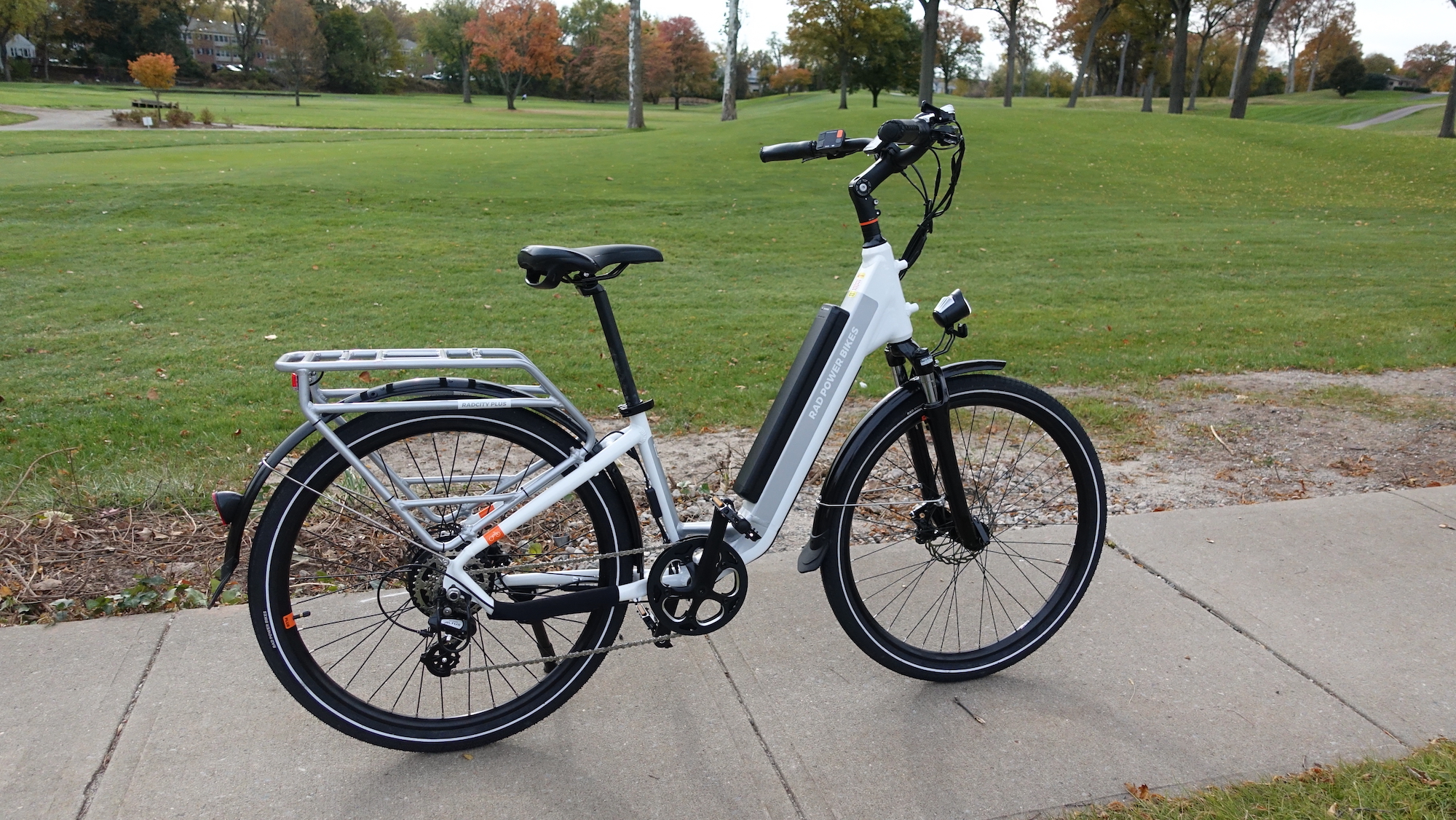I Drove BMW's Vision for the Future of Cars, and I'm Excited
BMW previewed the user interface of its upcoming iNEXT semi-autonomous car at CES. Here's how it felt to "drive."
We're many years away from full autonomy, though that hasn't stopped automakers from envisioning what the car will be when we no longer have to pay full attention to the road.

However, that vision is taking different forms for different car manufacturers. Audi, for example, is using virtual reality headsets that access data directly from the car to reshape the world as it passes you by. BMW, meanwhile, has taken a more subdued and pragmatic approach with its Vision iNEXT concept vehicle.
The Autonomous Commute
The iNEXT actually debuted at the LA Auto Show in September, though aside from the way it looked, we didn't know much about the actual experience of using the car. Fortunately, BMW brought a virtual reality demo to CES to simulate the iNEXT's user interface, some of which should be a part of the production model when it begins reaching showrooms in 2021.
The demo sits you in the iNEXT's cabin in virtual reality. I entered the "car" and promptly drove out of a parking lot. However, once I was on a major highway, the iNEXT went into full autonomy — something that assuredly won't be possible when the car launches in two years' time, but nevertheless indicates the direction BMW is headed in.
I was then summoned to a work meeting over video chat — a meeting that I initially intended to attend in person, but decided not to after BMW's Intelligent Personal Assistant recommended I leave earlier and take the meeting in the car in order to make it home in time to catch a football game. The chat windows were projected onto the windshield, dominating my field of vision and pretty much preventing any visibility of the road.

As the meeting winded down, I ordered food to be delivered to my home and remotely unlocked the door to my house when my friends arrived to watch the game. And underpinning all of these actions was BMW's Assistant, as well as a network of disparate services, all working in concert to make my evening go as smoothly as possible.
Get instant access to breaking news, the hottest reviews, great deals and helpful tips.
When you think about it, once you solve the autonomy problem, the rest of what the iNEXT could theoretically do isn't that complicated. But what will really make or break BMW's success here is its ability to integrate elements like Amazon Alexa with smart home platforms, the car's own mechanical systems and everything else under the sun, along with a layer of artificial intelligence to summon them dynamically, in response to constantly-changing scenarios.
"The art is really how to connect all these things — how they can work harmoniously together," Holger Hampf, president of BMW's Designworks division, told Tom's Guide. "So you have all of these different building blocks, and that is really what [the iNEXT] is all about. It's much more than a car — it shows these building blocks that you need for the future to create these experiences."
A Smart Car that Doesn't Brag
The philosophy behind the iNEXT is different than what you're seeing in most cars that would likely be categorized as smart. The cabin, at first glance, is extremely sparse — aside from two dashboard-mounted displays, there are no buttons or obvious points of interaction.
That's actually because they're hiding in the seats and interior surfaces themselves. BMW is invested in manufacturing what it's termed "smart materials" — touch-sensitive surfaces that essentially would turn the entirety of the car into a gesture-controlled touchpad.
MORE from CES: We Rode Google's CES Rollercoaster and filmed the Whole Thing
The seats themselves are clad in an almost velour-like fabric (though not as gaudy and certainly more premium-looking) that lights up the areas you touch, showing the trail of your gestures. A demo provided in a standalone room showed how users can draw icons to initiate certain behaviors, like a music note to start playback, and a horizontal line to pause.

That was neat, but what really caught my attention was the iNEXT's interior, roof-mounted projectors. They point down at the passenger's lap, and intelligently respond to objects placed in front of them. At one point, a book with blank pages was fully opened in view of the projector, which responded by blasting a movie onto the empty space. When the book was moved or a page was turned, it modified the content to fit the available surface area.
It's all a part of BMW's philosophy of making technology omnipresent, yet discreet. And that's somewhat rare in the auto industry right now. In fact, it's the polar opposite of what Chinese startup Byton is doing with the M-Byte crossover and its five displays. Many intelligent cars inundate you with information. The iNEXT — while far from a final product — trusts you enough to know when you actually need it.
"We want to make sure at every aspect, we get away from pushing technology into your face and more components into the car – more displays, more googles, more this, more that." Hampf said. "The vision with iNEXT was we need to do more with less."
Outlook
The iNEXT brought to CES isn't a prototype of the car BMW will launch in 2021, but rather the company's ultimate destination. The exterior of the final product will likely mimic the concept's aggressive lines and hulking faux-front grille, and the interior could incorporate the concept's airy motif — which isn't very different from what you already find in BMW's i3 city car. However, the coalescence of artificial intelligence and autonomy will take some time, and likely successive iterations. And even thought it feels a long way away, this sneak peek has gotten us excited to observe how the journey unfolds.
Adam Ismail is a staff writer at Jalopnik and previously worked on Tom's Guide covering smartphones, car tech and gaming. His love for all things mobile began with the original Motorola Droid; since then he’s owned a variety of Android and iOS-powered handsets, refusing to stay loyal to one platform. His work has also appeared on Digital Trends and GTPlanet. When he’s not fiddling with the latest devices, he’s at an indie pop show, recording a podcast or playing Sega Dreamcast.
